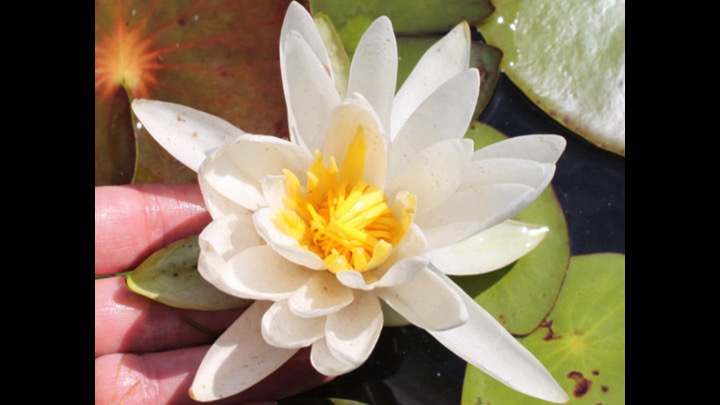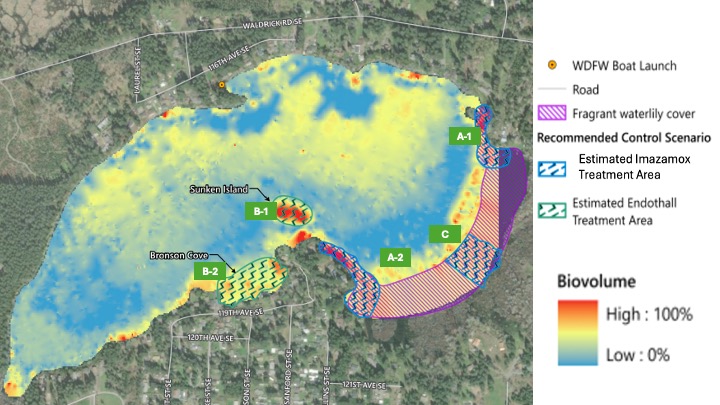The following information is from the Washington State Noxious Weed Control Board.
Why Is It a Noxious Weed?
Unmanaged fragrant water lily can form dense stands in water that can cover hundreds of acres and can persist until senescence in the fall. It can restrict lake-front access, eliminate swimming opportunities, and outcompete native aquatic vegetation.
How would I identify it?
General Description
It is an aquatic, bottom-rooted perennial. It has long, branched stolons extending up to 3.25 feet or more and lie just beneath the water’s surface. The nodes on the stolons typically produce a plant and many thread-like roots.
Flower Description
Flowers are fragrant, floating and solitary, 2.4 to 7.5 inches in diameter, are on long stems and open in the morning and close in the evening. They have 17 to 43 white, though sometimes pink, petals and 4 sepals. Stamens number 35 to 120 and are yellow.
Where does it grow?
It grows rooted in mucky or silty sediments in water up to six to seven feet deep. It prefers quiet waters such as ponds, lake margins, and slow streams and will grow in acid or alkaline waters. Please click here to see a county level distribution map of fragrant water lily in Washington.
How Do I Control It?
General Control Strategy
Permits may be required for any control methods (hand-pulling, mechanical, chemical) done in natural waterbodies such as lakes and wetlands. Contact your County Noxious Weed Control Program for guidance.
Mechanical Control
Continually removing all leaves as they emerge may kill plants after a few seasons. Cut plant material must be removed from waterways. Cutting must be done several times per year.
Cultural Control
Control of small areas may be achieved by covering sediment with an opaque fabric to block light. Drawing down water levels, where possible, may control fragrant water lily.
Herbicide Control
Because herbicide availability and regulation differ between states, we recommend the Washington Department of Ecology website for information on aquatic weed management and herbicides, or contact your county noxious weed coordinator.



